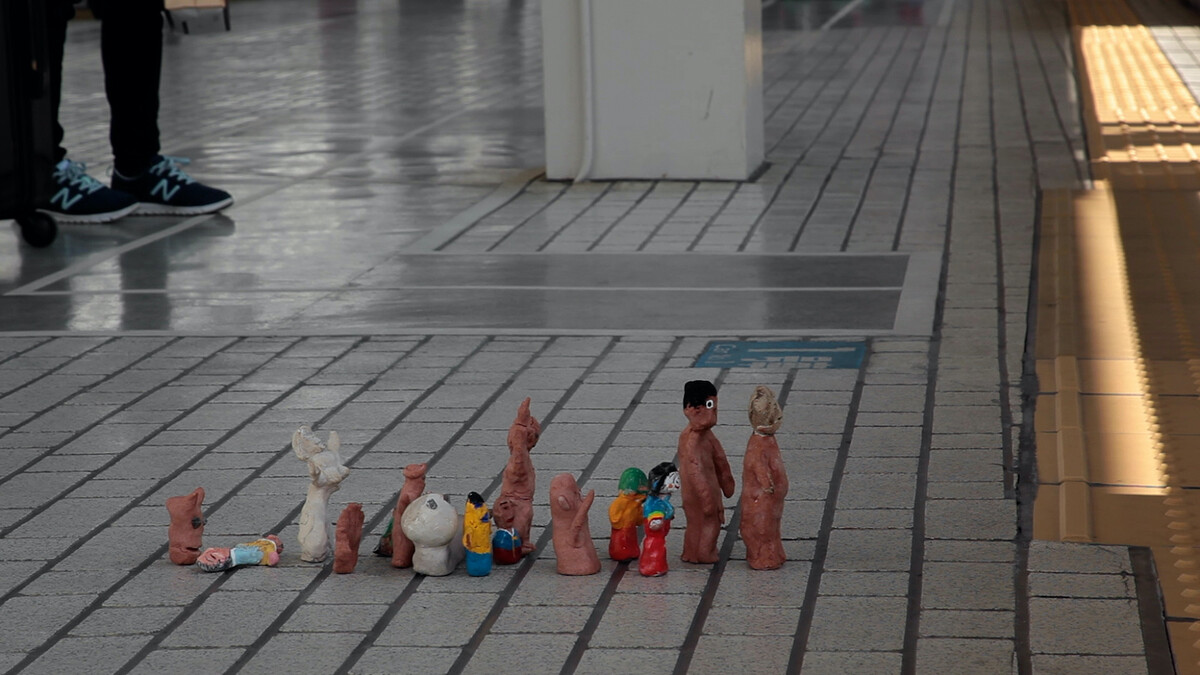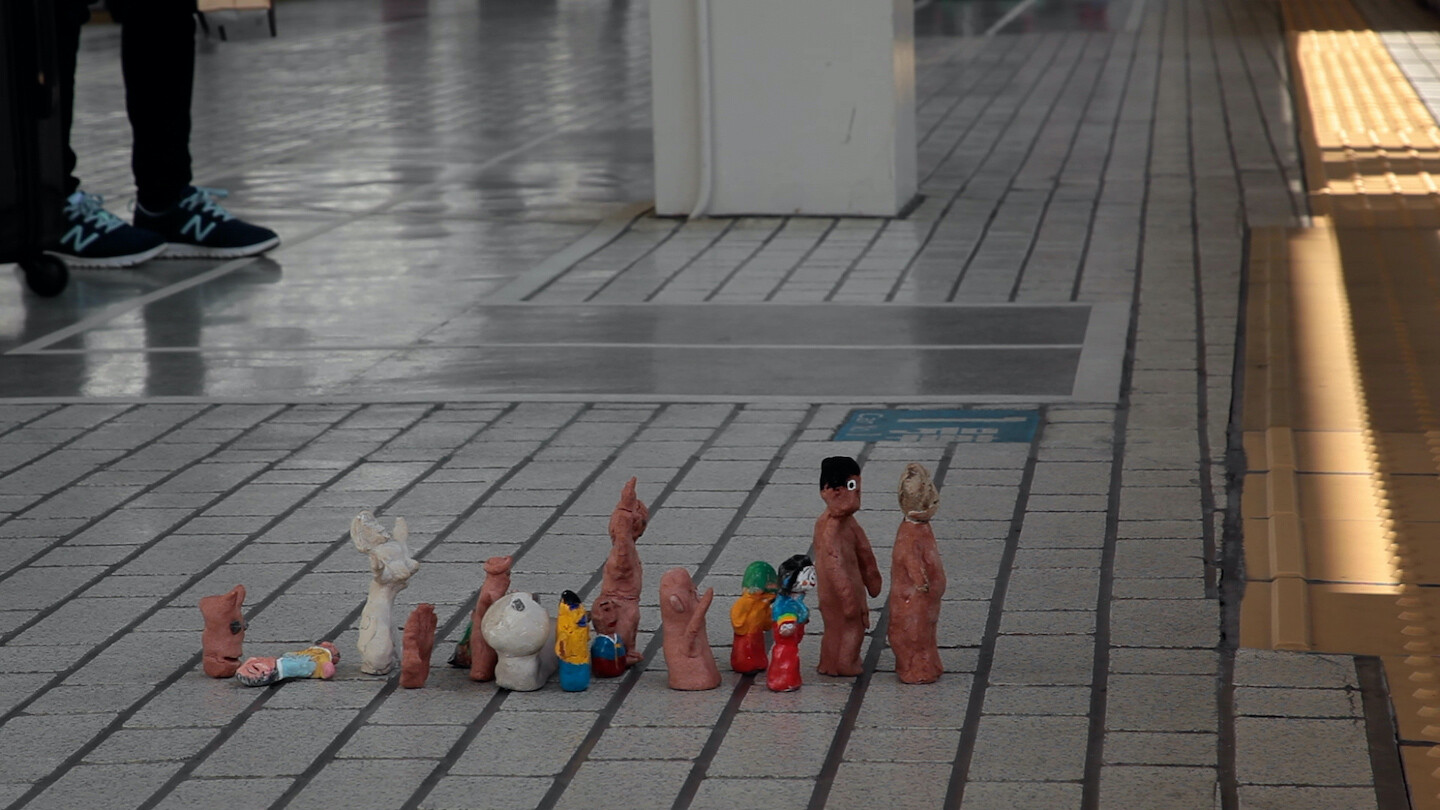Artist Cinemas presents
Old Long Stay
Yuki Iiyama
2020
170 Minutes
Artist Cinemas
Week #6
Date
May 24–30, 2021
Join us on e-flux Video & Film for an online screening of Yuki Iiyama’s Old Long Stay (2020), on view from Monday, May 24 through Sunday, May 30, 2021.
The term Zainichi Koreans refers to residents of Japan (and their descendants) who are originally from the Korean Peninsula—specifically, those who settled in Japan during its colonial rule of Korea due to conscription, and to economic and historical factors. It is estimated that there are over one million such residents, including those who have been naturalized. In Japan today, everyone has the right to a disability pension, regardless of nationality. However, Zainichi Koreans above a certain age are left stranded in between the former and current systems, still unable to receive their benefits even as they pay taxes or become naturalized citizens. Over the years, the issue has resulted in a number of class action lawsuits and campaigns across the country. In Old Long Stay, Iiyama utilizes archival footage and conducts interviews with plaintiffs (primarily among the deaf and hard-of-hearing community in Kyoto) and their supporters, taking us on a journey through the historical and political aspects of this issue; the class action lawsuit across former leper colonies where the lack of compensation was, exceptionally, redressed; and the voices of the multiculturalism debate in the Higashi-Kujo area of Kyoto, home to a relatively large population of Zainichi Koreans.
The film is presented here alongside an interview with Yuki Iiyama conducted by Akira Rachi.
Old Long Stay is the sixth and final installment of Faraway, So Close, a program of films and interviews convened by Koki Tanaka, and comprising the sixth cycle of Artist Cinemas, a long-term, online series of film programs curated by artists for e-flux Video & Film.
Faraway, So Close will run from April 19 through May 31, 2021, screening a new film each week accompanied by an interview with the filmmaker(s) conducted by Koki Tanaka and invited guests.
*Faraway, So Close wraps on Monday, May 31 with a repeat screening of all six films presented in the program. Watch the films here.
Yuki Iiyama in conversation with Akira Rachi
Translated form the Japanese by Lillian Canright
Akira Rachi (AR):
While Old Long Stay (2020) is structured around the film’s multiple narratives—the narratives of those you interviewed and the narratives preserved in archival footage—these narratives frequently unfold over shots of landscapes. Sometimes these landscapes had an obvious correspondence with the narration, but sometimes they suggested a layer all their own, such as the scene with the hibiscus syriacus, or the one with cherry blossoms, which open the film. I felt as if I was being asked to read something into these images—to listen to what the landscapes had to say. Let’s start with the relationship between what we hear and what we see in the film.
Yuki Iiyama (YI):
Looking back on that relationship, I’d say the places with the most pronounced separation between what you hear and what you see are the scenes from the Chikuho area with Hiroshi Tanaka’s narration, and the part about the leper colonies with Kwiboon Kim. Researchers of history talk about what’s already in the past, not what they themselves have experienced. So, this is where there might be some room for discrepancies or dislocations between the words and the scenery. And perhaps these discrepancies or dislocations are also related to the anguish of learning about things we can only imagine, or can’t even imagine.
On the other hand, we have the people who supported the plaintiffs in the lawsuits. These supporters do talk about their own experiences—but they also simultaneously attempt to give their versions of the stories of people who, for whatever reason, could not be present. These parts of the film also feature landscapes alongside the narration, but the relationship between the two is not always clear: sometimes they seem unrelated, sometimes they echo each other. Each speaker’s words have a different momentum, and running in parallel with this are my own shifts in speed as I make my way with the camera towards related places, fluctuating in the frame as I stop at a certain spot. Or again, you have the different movements of the hands and faces of the people making the figurines; you see the place where the figurines are being made; and finally you see their crude journey as the figurines begin to move. In this piece, I’m dealing with Japan’s colonialism, as well as one aspect of the ensuing discrimination faced by minority groups. So, as much as possible, I wanted both the narration and the scenery of the film to include the gestures and voices of the people who actually participated in these class actions. Unfortunately, it is also true that doing so may cause trouble for some of these people, and the inclusion of their voices means there may be occasions when I am barred from showing the work.
AR:
When you refer to “voices,” I get the sense that you’re not just referring to physical sounds, but also using the word on a more abstract level. The exploration of methods and spaces to amplify voices is an approach you’ve taken in all of your works so far, not just this one.
YI:
While some of us—artists, for example—are able to explore methods and spaces to amplify their own voices, I’m more interested in considering methods and spaces with those who find it difficult to do so on their own. Old Long Stay begins with the absence of the leader of the deaf and hard-of-hearing plaintiffs, Su Yong Kim. But since he was able to speak so well, albeit in sign language, this absence could be compensated for with archival footage shot at an earlier date. On the other hand, the plaintiff with mental illness, whom the supporter Chong Myong Ae mentions, was unable to testify herself, even while she filed the lawsuit. So here was someone who wanted to be heard, yet found it difficult to speak in their own voice.
At the workshop at the NPO Kyoto Zainichi Korean Life Center LFA, I proposed making figurines to represent those who had wanted to take a stand but coudn’t join the movement, among them those who were still living and those who had left us. I asked old women who came for the center’s day services, people with disabilities who work there, and high school students who visited the center to participate in the workshop. During the editing stage, I showed them drafts of the scenes they appear in, and I got feedback like, “This isn’t what it was like for me, it feels like I’m watching quietly from afar,” or “I’ve never been asked to review a video prior to its release.” This meant that I had to constantly scrutinize and adjust how things are coming across, but as I work on a piece, it’s important to me to receive some form of consent from those who helped me make it. Because “exploring methods and spaces to amplify voices” is also always accompanied by the possibility of exploitation.
AR:
There’s the old expression that says “time heals everything.” When it comes to the events you’re dealing with,however, time alone is not enough. So much time has passed and continues to pass while the problems remain unresolved, and many of those directly affected—people who should be heard, and helped—meanwhile pass away. What do you think art can do about problems that time “heals” without really solving them?
YI:
I’d say that all we can do is describe how we couldn’t find a solution, as a form of resisting the violence that tries to defer the problem or pretend it never existed. We can’t stop the passage of time. So even if in time, someday, these problems just solved themselves, that’s still no consolation at all. We would still have to live with the fact that we couldn’t solve them. But this is really just my way of looking at it, and it’s totally possible that this very sense of failure contributes to the deeply ingrained divisions between the position of the perpetrator and the position of the victim. So,I think we have to pay more attention to this sense of failure—how it might serve or harm the wrong side.
AR:
Speaking of time, your child makes an appearance in the film.
YI:
When I began working on this film, I was half-heartedly resigned to the fact that I was going to have to travel with my daughter, who’s too young to leave behind. But contrary to my expectations, her presence proved enormously felicitous when it came to approaching these communities. And having someone in the film who is on a different timeline than my own helps fix our sight not on the present or past, but towards the future. While I was working on the film, I came across footage shot twenty years ago by Igarashi-san, who was a university student at the time. Is it too much of a wishful thinking to hope that someone someday will pick up the material I generated in the process of making this work—the mistakes and hesitations and all? Even if the people involved were unable to make themselves heard, the next generation, and the generation after that, can—without having to be related to these people—imagineand retell their stories. My hope is that documentation and art can be resources towards these ends.
For more information contact program@e-flux.com.


